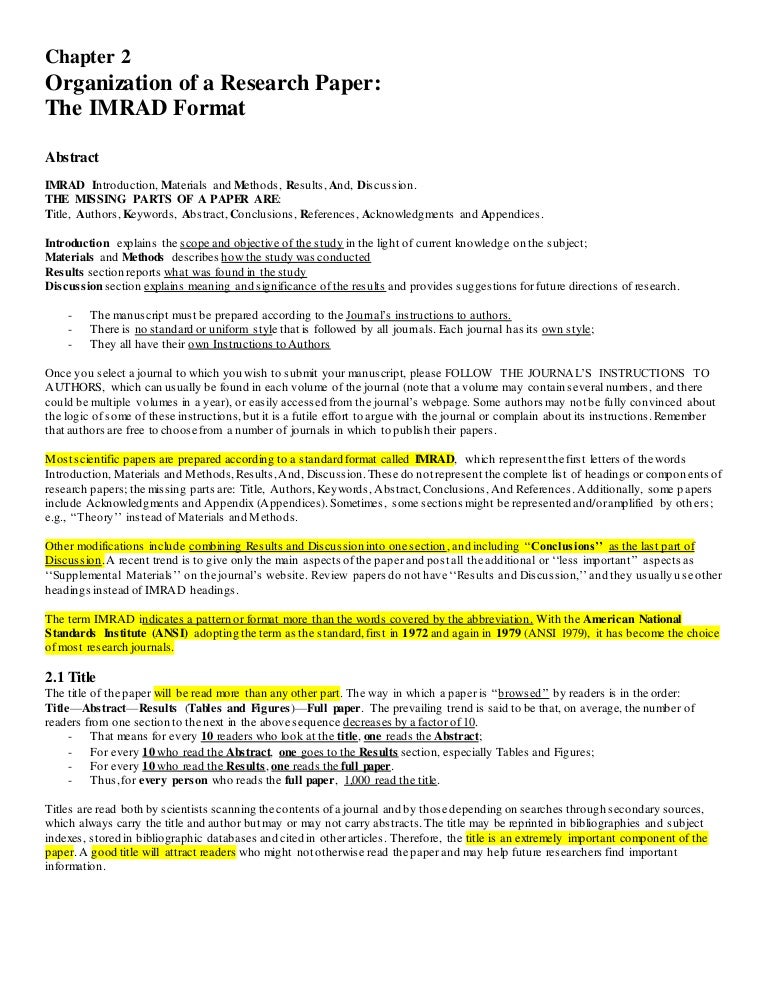The discussion section is the place to leave your mark. So instead of simply summarizing your data and suggesting a few obvious follow-up studies, think about presenting your data in a novel way, showing how the work might resolve an existing controversy in the literature or explaining how it connects to an entirely different literature 7 rows · · Please note: In 7th edition format, student papers do not include a running Author: Marietta Briguglio · In APA style, the results section includes preliminary information about the participants and data, descriptive and inferential statistics, and the results of any exploratory analyses. Include these in your results section: Participant flow and recruitment period
How to Write a Discussion for an APA Style Paper | Synonym
This page is brought to you by the OWL at Purdue University. When printing this page, you must include the entire legal notice. All rights reserved. This material may not be published, reproduced, broadcast, rewritten, or redistributed without permission. Use of this site constitutes acceptance of our terms and conditions of fair use. Note: This page reflects the latest version of the APA Publication Manual i. The equivalent resource for the older APA 6 style can be found here. Media Files: APA Sample Student PaperAPA Sample Professional Paper.
This resource is enhanced by Acrobat PDF files. Download the free Acrobat Reader. Note: The APA Publication Manual, 7 th Edition specifies different formatting conventions for student and professional papers i.
These differences mostly extend to the title page and running head. Crucially, apa format discussion section, citation practices do not differ between the two styles of paper. However, apa format discussion section, for your convenience, we have provided two versions of our APA 7 sample paper below: one in student style apa format discussion section one in professional style. Note: For accessibility purposes, we have used "Track Changes" to make comments along the margins of these samples.
Those authored by [AF] denote explanations of formatting and [AWC] denote directions for writing and citing in APA 7. Find Info For Find Info For Academics Admissions Current Students Athletics About Careers Prospective Students Research and Partnerships Quick Links Apply News President Shop Apa format discussion section Give Emergency.
Purdue Online Writing Lab College of Liberal Arts. Writing Lab Purdue OWL Research Contact Site Map. Research and Citation APA Style 7th Edition APA Formatting and Style Guide 7th Edition. Welcome to the Purdue OWL This page is brought to you by the OWL at Purdue University. APA Sample Paper Note: This page reflects the latest version of the APA Publication Manual i.
Media Files: APA Sample Student PaperAPA Sample Professional Paper This resource is enhanced by Acrobat PDF files. Download the free Acrobat Reader Note: The APA Publication Manual, 7 th Edition specifies different formatting conventions for student and professional papers i, apa format discussion section. APA 7 Student Paper: APA 7 Professional Paper:.
APA style - Writing the Results and Discussion sections
, time: 15:02APA 7th Edition Formatting Guidelines - APA Basics - Monroe College LibGuides at Monroe College

· In APA style, the results section includes preliminary information about the participants and data, descriptive and inferential statistics, and the results of any exploratory analyses. Include these in your results section: Participant flow and recruitment period APA Sample Paper. Note: This page reflects the latest version of the APA Publication Manual (i.e., APA 7), which released in October The equivalent resource for the older APA 6 style can be found here. Media Files: APA Sample Student Paper, APA Sample Professional Paper This resource is enhanced by Acrobat PDF files. Download the free Acrobat Reader The discussion section is the place to leave your mark. So instead of simply summarizing your data and suggesting a few obvious follow-up studies, think about presenting your data in a novel way, showing how the work might resolve an existing controversy in the literature or explaining how it connects to an entirely different literature
No comments:
Post a Comment